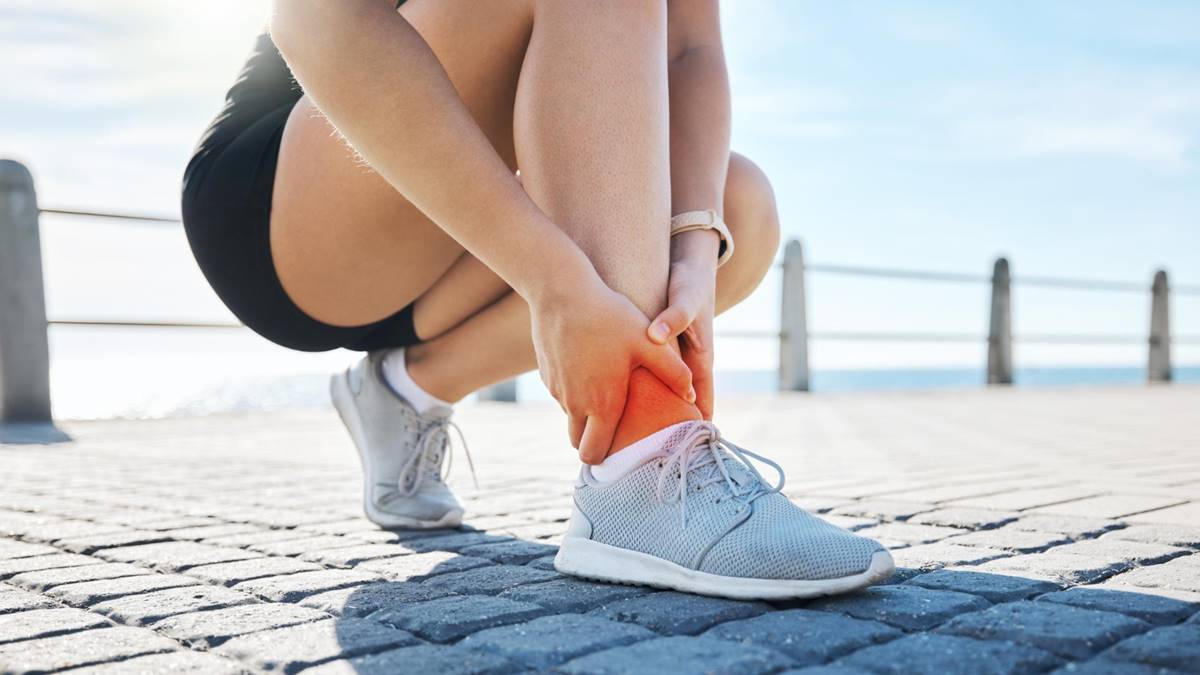A swollen ankle can occur suddenly — after a misstep, long day on your feet, or even without a clear reason. Whether caused by a minor sprain, fluid retention, or overuse, ankle swelling is uncomfortable and limiting. Fortunately, there are several simple, natural remedies you can try at home to reduce the inflammation and support your body’s healing process.
According to judokaposvar.hu, a few everyday techniques can make a real difference in how quickly swelling subsides and how soon you regain mobility.
Rest and Elevation: Let Your Body Heal
One of the first steps when dealing with a swollen ankle is to rest it. Avoid putting unnecessary weight on the joint, especially in the first 24–48 hours. Elevating the ankle above heart level helps reduce blood flow to the area, which in turn minimizes swelling.
Lie down and prop your leg on pillows or a rolled-up blanket, making sure the foot stays comfortably elevated. This simple act supports natural drainage and promotes faster recovery.
Cold Compress: Reduce Heat and Swelling
Applying a cold compress to the swollen ankle is a classic but effective remedy. Cold therapy helps constrict blood vessels, reduce internal bleeding, and numb discomfort. You can use:
-
A bag of frozen peas wrapped in a towel
-
A commercial cold pack
-
A cloth soaked in ice water
Apply the cold pack for 15–20 minutes every two to three hours during the first day after the swelling appears. Always wrap the ice — never apply it directly to the skin.
Epsom Salt Soak: Soothe Muscles and Joints
Epsom salt (magnesium sulfate) baths have long been used to relieve swelling, stiffness, and soreness in muscles and joints. Fill a basin with warm water and dissolve 1–2 cups of Epsom salt, then soak your foot and ankle for 15–20 minutes.
The magnesium is believed to be absorbed through the skin, relaxing tissues and improving circulation, though scientific studies on this are limited. Still, many people report noticeable relief with this method.
Compression: Gentle Support for Recovery
Elastic bandages or compression socks can provide gentle pressure that helps prevent fluid buildup in the tissue. Be careful not to wrap too tightly — the goal is to support circulation, not cut it off.
Use compression mainly during the day, and remove the bandage at night to allow the area to rest and breathe. If you experience tingling, numbness, or increased pain, remove the bandage immediately.
Herbal Solutions: Nature’s Anti-Inflammatories
Certain herbs and natural ingredients may help reduce inflammation and swelling when applied topically or consumed as teas. Examples include:
-
Arnica: available as a gel or cream, traditionally used to treat bruising and sprains
-
Turmeric: contains curcumin, a natural anti-inflammatory compound — best consumed in food or drinks
-
Ginger: used both as a tea and poultice for its warming and circulation-boosting properties
-
Chamomile: calming and anti-inflammatory, ideal in tea or as a warm compress
Always do a patch test when applying any new substance to your skin, especially if you have sensitive skin or allergies.
Hydration and Diet: Internal Support for Healing
Your body flushes out toxins and excess fluid more efficiently when it’s properly hydrated. Drink plenty of water throughout the day, and avoid overly salty or processed foods, which can lead to fluid retention and worsen swelling.
Include foods that naturally support healing, such as:
-
Fresh fruits and vegetables high in antioxidants
-
Omega-3 rich foods like fish, flaxseeds, and walnuts
-
Anti-inflammatory herbs and spices (turmeric, parsley, garlic)
A balanced diet contributes not only to reducing swelling but also to speeding up overall recovery.
Gentle Movement and Massage
After the initial inflammation starts to go down, light movement and massage can help stimulate circulation and reduce stiffness. Simple ankle circles, toe stretches, or light foot flexing can prevent stiffness from setting in.
You can also gently massage the ankle and foot with a bit of natural oil (like coconut or olive oil) to encourage lymphatic drainage and reduce puffiness. Be gentle — if pain increases, stop and rest.
When to See a Doctor
While most minor swelling can be treated at home, it’s important to seek medical attention if:
-
The swelling doesn’t improve after a few days
-
You can’t put weight on the ankle at all
-
There’s severe pain, bruising, or signs of infection
-
You have a history of circulation problems or kidney issues
Swelling that comes on suddenly and without clear cause may also signal an underlying health condition and should not be ignored.
Conclusion: Gentle and Natural Support Goes a Long Way
A swollen ankle doesn’t always require strong medication or a trip to the ER. In many cases, natural remedies like cold compresses, elevation, Epsom salt soaks, and herbal treatments can ease the discomfort and speed up the healing process.
By listening to your body and responding with care, rest, and support, you can help your ankle recover naturally and safely.
Source: judokaposvar.hu – Dagadt boka kezelése házilag: természetes módszerek a duzzanat csökkentésére
